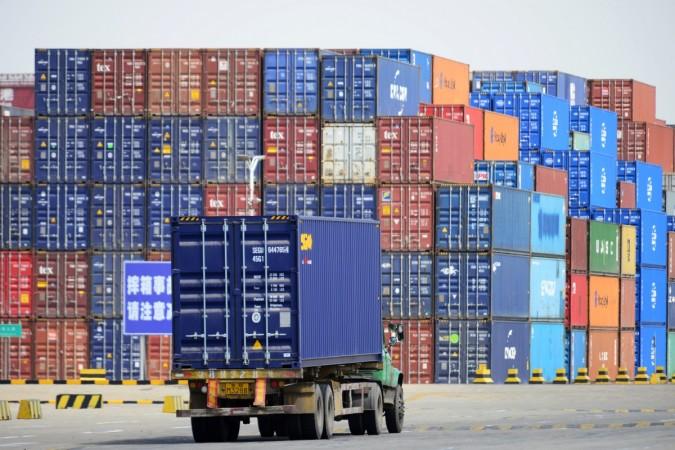
With IMF and professional forecasters trimming their global growth forecasts to one of the lowest levels since the global financial crisis, fears of a global slowdown are turning into fears of a global recession. The ongoing trade war and inverted bond yields are the major reasons behind the scare. Overall, GDP growth is one key parameter which the government and business focus on. There is a widespread belief that the developed economies are the most peaceful and happiest countries and this may not necessarily be the case.
Apart from GDP growth, policymakers often focus on the unemployment rate, labour productivity, inflation and real wage growth as the other major indicators of a country's prosperity. Amid concerns over a global slowdown, weak growth numbers across nations and declining working population, I believe, GDP or any other major economic indicator alone may not be a sufficient measure of people's wellbeing in that country. For one, these aggregate measures do not guarantee that wealth creation and distribution is done fairly among its citizens, and hence new models are needed to define a nation's success and failures. Human Development Index or HDI is a more holistic measure wherein prosperity is taken in a wider sense of human well-being and used as criteria for assessing real human development. It measures key dimensions of human life and development with priorities set at healthy and long life (life expectancy index), knowledge (education index) and having a proper standard of living (GNI index).
From a GDP growth point of view, high global debt to GDP ratio, declining working-age population and reduced productivity are reasons behind the slowdown in the global economic growth. The lower working-age population is a drag across major developed economies. This has been accompanied by lower labour force participation rate. As per World Bank data, global labour force participation has reduced from 80% in 1990 to 74% in 2018. The same data shows that the highest labour force participation rate is seen in South East Asian countries with an average rate above 76%. Germany, Russia, China and Japan are now facing shrinkage in the working population and most of the countries are likely to grow slower when compared to the pre-global financial crisis. There are a few countries where the working population is rising, and India is an example.

Unfortunately for India, around 50% of the population is employed in agriculture, but this presents an opportunity as well. Job creation in manufacturing and services can result in a shift from low productivity jobs in agriculture and can result in much better economic and social welfare growth. According to the projections, the working population will start to peak around 2040 and India needs to maximize the demographic dividend before that. Though the GDP growth rate of Japan, Germany and other major nations in European Union is declining, the per capita GDP growth in these nations is still decent and this implies that the quality of life in these countries remains high.
For example, Japan's GDP reached all-time highs of 6203.21 Bn USD in 2012, and since then GDP is stagnant and was pegged at 4970.92 Bn USD in 2018. On the flip side, its GDP per capita has risen from 45276.90 USD in 2012 to 48919.60 USD in 2018. Even its GDP per capita adjusted by PPP has risen from 36367.60 USD in 2012 to 39293.50 USD in 2018. Similarly, Germany's GDP growth rate over the last 5 years was a mere 0.50% CAGR and reached 3996.76 Bn USD in 2018 vs. 3898.73 Bn USD in 2014. On the other hand, its GDP per capita has risen from 45132.30 USD in 2014 to 47501.80 USD in 2018 and recorded a growth of more than 1% CAGR.
Even when GDP growth is low, on account of a falling population, per capita income can increase at a decent rate and can result in better social harmony. Instead of looking merely at GDP numbers and deciding whether a nation is in a recessionary or expansionary mode, economists, political parties and governments should look at the growth of GDP per capita on a PPP basis and should take measures to maximize the same.
GDP numbers are not the only indicators of a nation's development; focusing and strengthening of institutions, and other viable features that serve its population help the economy to grow. When the nation is happier and wealthier, it helps innovation which drives long term well being. For this, quality of living, social security and legal system come into play as well. With strong legal systems, crime rate reduces and as a result, the nation becomes wealthy within its ambit. The level of commitment of these institutions, enforcement of laws and steps taken for the wellbeing of the population are the key factors of a nation's success. In 2018, the network of Wellbeing Economy Governments (WEGo) formed by Scotland, Iceland and New Zealand objected to the usage of GDP as a measure of country's success and wanted to focus on other parameters like social and environmental challenges. They share policy frameworks and expertise for enhancing human wellbeing and progress towards the UN sustainable development goals.

There are other factors such as quality of education, accessibility to healthcare, quality of life, average life expectancy, housing for all, social & economic equality and freedom of expression that define success and these need to be encouraged. Some of these are captured by HDI. Generally, prioritizing economic growth has often led to an oversight of the health and educational sectors. Higher GDP levels need not produce a better quality of life and with the majority of wealth concentrated in the hands of few, it leaves the poor to struggle for food and shelter. Hence, it is widely believed today that the focus should be on growth in per capita GDP, GDP Per capita adjusted to Purchasing Power Parity (PPP) and improvement in HDI. On the other hand, most poor countries in terms of GDP or GDP Per capita growth are catching up with their richer counterparts. In order to assess the intrinsic success of a nation, these new indices are a more robust reflection of the social wellbeing of its citizens.
HDI methodology assesses the wellbeing of people in terms of sustainable income, education and life expectancy. Countries like Norway, Iceland, Switzerland, Denmark and Japan are ranked top in HDI. These are the countries which also rank high in happiness, wellbeing and social progress indices. France, Italy and the USA are the classic examples where they rank top in terms of GDP per capita, but rank lower in the social index. European Union uses the social progress index to frame policies for its citizens.
Along with the wellbeing of the population, the functioning of government institutions helps these countries rank high in social progress index. For example, Costa Rica with modest income in terms of GDP and GDP per capita is ranked higher in Human Development and Social indices and has also been outperforming its neighbours over the last 50 years because of its very strong institutions. Government's accountability, stringent rules and laws, enforcement of these laws, transparent legal processes and protection of civilian rights should also be considered in evaluating a country's success. Health and standard of living are independent of wealth. With higher rank in HDI, these nations rank higher in terms of promoting good health and prevention of catastrophic diseases.
Though economic success is crucial, other parameters need to be considered for measuring country's growth and success; high per capita GDP or high Per capita GDP growth rate or a low unemployment rate or high wage growth may not necessarily lead to the wellbeing of citizens. It's the commitment of institutions towards citizens and citizen's commitment towards the nation that needs to be assessed to understand the real success of a nation. A strong position of a country in happiness or social progress index will make citizens happy, live in harmony and work towards building a strong nation and thereby a better world.
[Rajiv Singh is the CEO of Karvy Stock Broking. The views and opinions expressed in this article are those of the author and do not reflect those of International Business Times, India]











